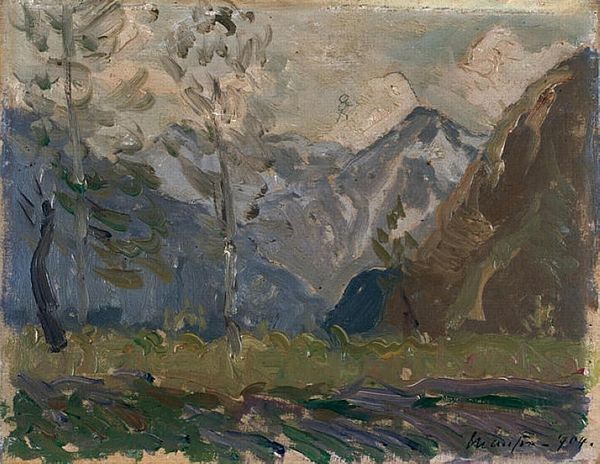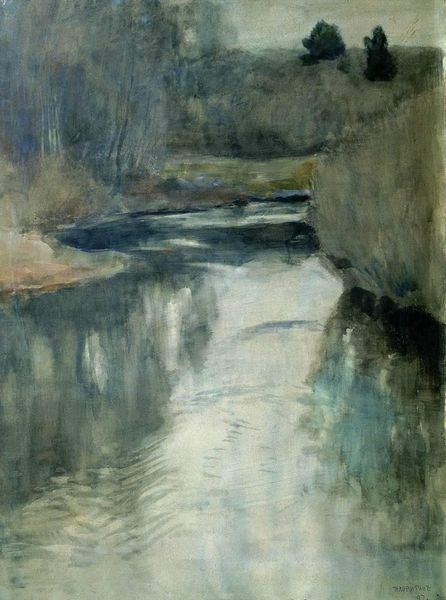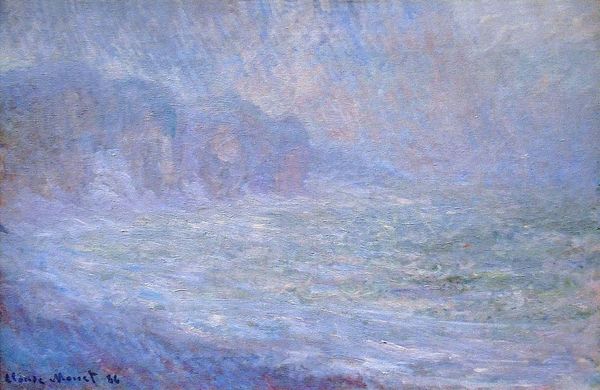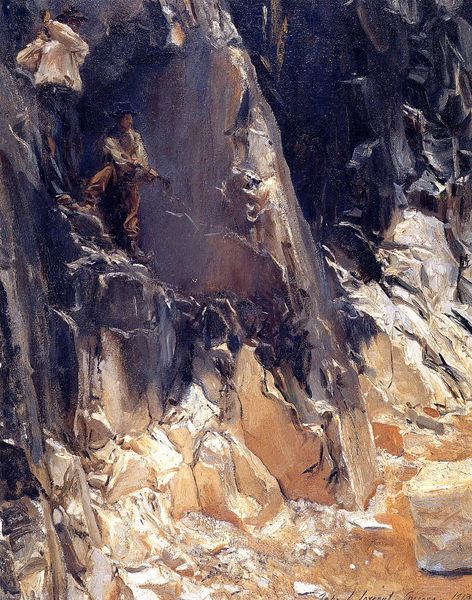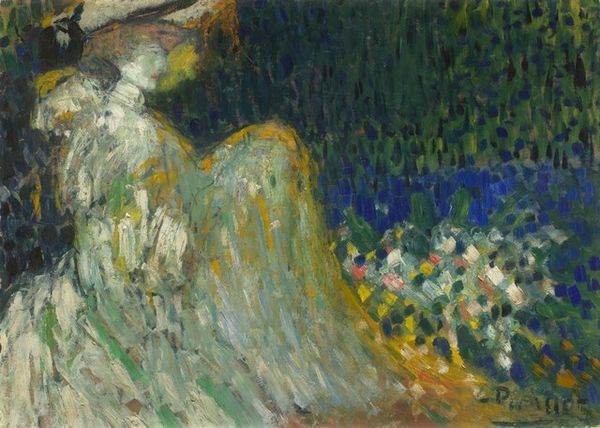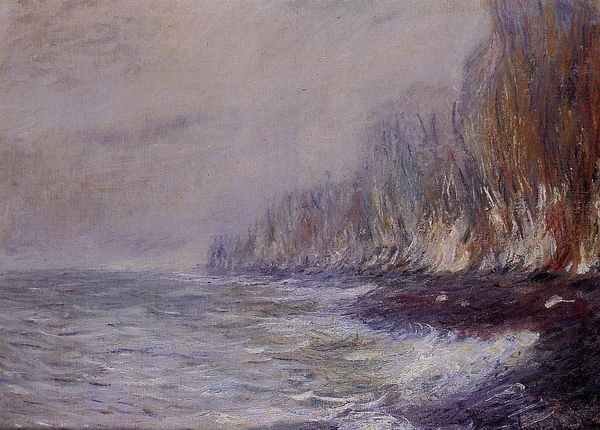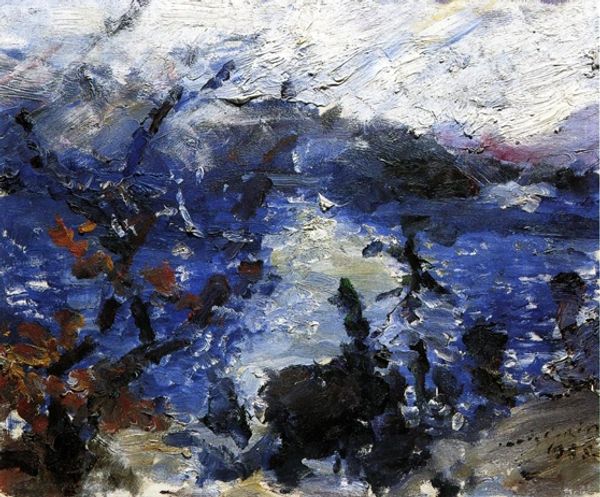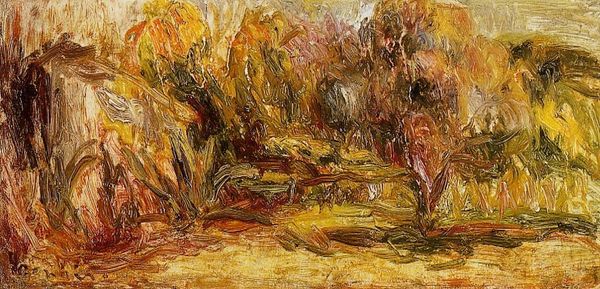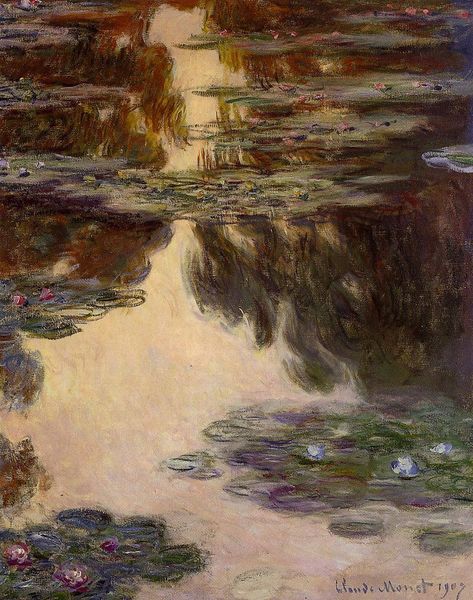
painting, plein-air, oil-paint
#
painting
#
impressionism
#
plein-air
#
oil-paint
#
landscape
#
impressionist landscape
#
oil painting
#
geometric
#
arch
#
seascape
#
water
Copyright: Public domain
Curator: Immediately, I’m drawn to the contrast! Dark, rough rock against this hazy, light-filled vista. It's like looking into another world. Editor: You've nailed the immediate feeling. We're looking at Claude Monet’s “The Rock Needle Seen through the Porte d'Aumont,” painted in 1885. He really captures a transient moment there. Curator: Transient is right! Look at the application of paint, those broken strokes describing the surface of the water, all suggesting movement and reflecting light. This would've been done *en plein air*, right? It is incredibly visceral. Editor: Precisely. It reflects Impressionism's commitment to capturing the fleeting effects of light and atmosphere. Considering Monet’s processes here—outdoors, observing shifts in natural light – he was radically democratizing the practice of landscape painting. How accessible was this landscape to those who consumed this image? Curator: That’s a fascinating angle! The commercialization of art is not something artists necessarily dictate, yet it has implications for society at large. In contrast to earlier academic landscapes designed for elite consumption, Monet, by painting *en plein air* and depicting everyday scenes, brought art closer to a wider public experience. The availability and affordability of materials, such as oil paints in tubes, allowed him greater freedom of movement and experimentation too. Editor: That’s where his real innovation comes from: expanding production possibilities that consequently broadened access. Consider the socio-political context. Late 19th century France was experiencing rapid industrialization. Did Monet make any kind of social commentary through his focus on this kind of natural imagery? Was this nature for the consumption of a weary industrial world? Curator: The question is unavoidable. Instead of painting urban life, factories, and railroads, he sought refuge in the natural world. I agree, his imagery would certainly present a space of escapism from modernity's discontents. The visible brushstrokes disrupt any seamless, polished illusion, drawing the viewer's attention to the labor involved in its creation. He wants to depict and portray nature through that perspective, and how nature impacts that labour and making. Editor: So it is through those broken strokes of labor that Monet creates more widespread accessibility to a rapidly evolving visual and social world. His individual choices had enormous social repercussions. Curator: Absolutely. It allows for more to enjoy this. This perspective encourages new and varied techniques in painting styles. Editor: I think that's an incredible reflection to finish with.
Comments
No comments
Be the first to comment and join the conversation on the ultimate creative platform.
